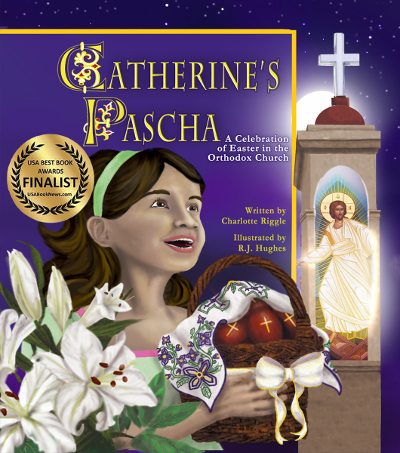It’s the Annunciation! Today, we celebrate the moment that time, space, all that is and was and will be, turned inside out, and the uncontainable God was contained in a virgin’s womb.
It was His choice, of course, to enter into space and time, to take on flesh, to become part of his own Creation. But not His choice alone. Because what He chose to do would alter all of humanity forever. So he asked permission. God asked, and waited. And nothing happened until the young woman said yes.
She said it, not just for herself, but for all of us. Because she said yes, God took human flesh from her, as he’d taken human flesh from Adam. And just as Eve was bone of Adam’s bone, and flesh of his flesh, so the One conceived in Mary’s womb was bone of her bone and flesh of her flesh.
All that it means to be human, God granted to Eve with Adam’s flesh. And all that it means to be human, He took on Himself with Mary’s flesh.
And just as He shares the divine nature with the Father and the Spirit, in that moment, in the instant of the Incarnation, Mary shared her human nature, our human nature, with Him.
Impossible Implications
We don’t think about that very often. At least, I don’t. I know it’s true. But the implications are terrifying.
Jesus told us that, if we’ve seen him, we’ve seen the Father.
And Jesus told us that, if we’ve done something to another human being, for good or for ill, we’ve done it to Him.
It’s no use saying that he meant the first one, but not the second. They are both true, in the same way, for the same reason. Because the Persons of the Godhead share the same nature, what touches one of them touches all of them.
And because one of the Persons of the Godhead shares our human nature, what touches one of us touches all of us. Touches Him. Because He, the only begotten Son and immortal Word of God, is Immanuel. God with us. One of us.
Read More
Upon the Annunciation and Passion: John Donne’s sublime poem from 1607, when the Annunciation and Holy Friday were the same day.
The Story of Mary, the Mother of God: A Review: Based on the Protoevangelium of James, this lovely picture book tells the story of the Theotokos from her Conception through the Annunciation.
Easter Picture Books Keep Pascha Present: How you can use Easter picture books to keep children thinking about Pascha, talking about Pascha, learning about Pascha, before and after Pascha.
Buy the Books!

These delightfully diverse books provide disability representation (Elizabeth, one of the main characters, is an ambulatory wheelchair user). They also give Orthodox Christian children the rare opportunity to see themselves in books, and children who are not Orthodox the chance to see cultural practices they may not be familiar with.
Catherine’s Pascha
FINALIST IN THE 2015 USA BEST BOOK AWARDS
Catherine doesn’t like vegetables. She doesn’t like naps. She doesn’t like it when her mom combs her hair. She loves hot dogs, chocolate cake, and her best friend, Elizabeth. Most of all, she loves Pascha! Pascha, the Orthodox Christian Easter, is celebrated in the middle of the night, with processions and candles and bells and singing. And Catherine insists that she’s not a bit sleepy.
Celebrate the joy of Pascha through the magic of a book: Catherine’s Pascha. Available on Amazon, Bookshop.org, and my webstore.
The Saint Nicholas Day Snow
Shoes or stockings? Horse or sleigh? Does St. Nicholas visit on December 6 or on Christmas Eve? Will a little girl’s prayer be answered? When Elizabeth has to stay at Catherine’s house, she’s worried about her grandmother, and worried that St. Nicholas won’t find her. The grownups, though, are worried about snow.
Celebrate the wonder of St. Nicholas Day through the magic of a book: The Saint Nicholas Day Snow. Available on Amazon, Bookshop.org, or my webstore.




We *just* read that poem by John Donne today in my Orthodox theology class!
Isn’t it wonderful? It’s one of my very favorites.